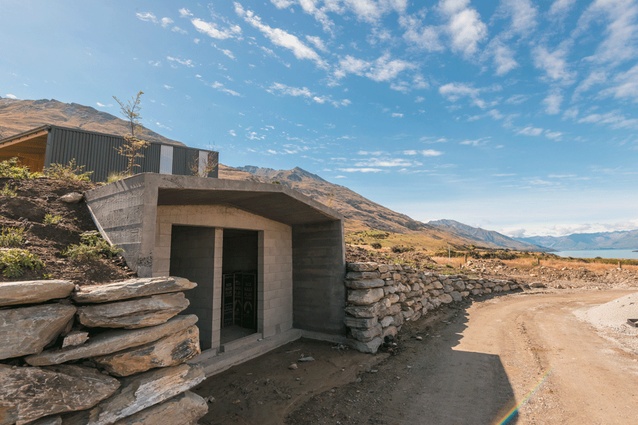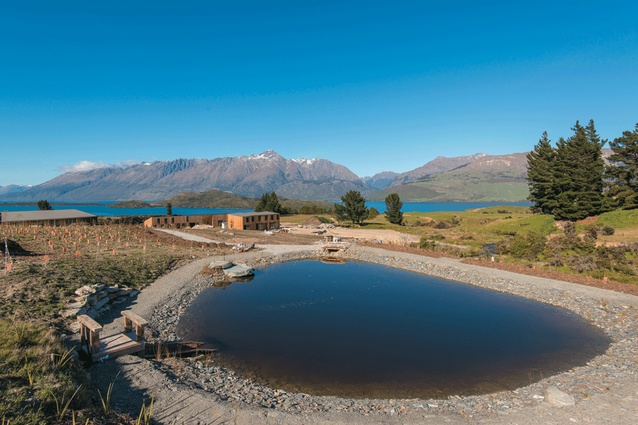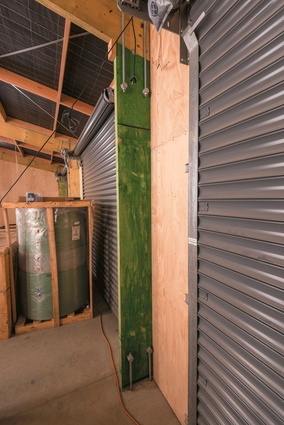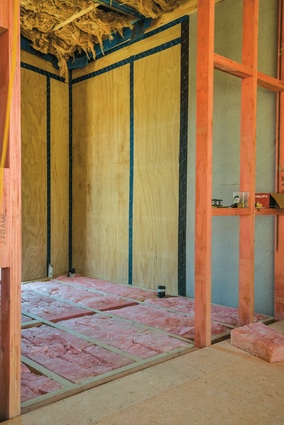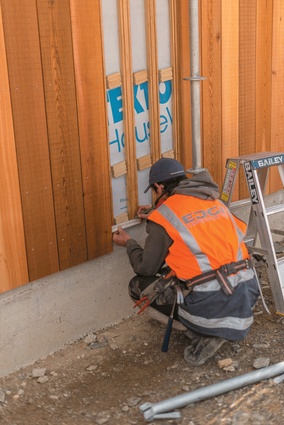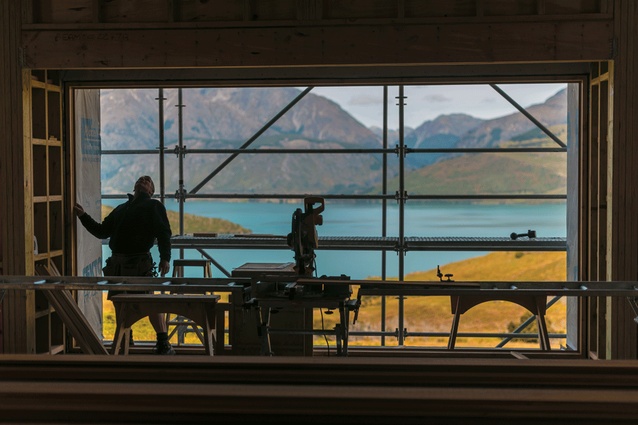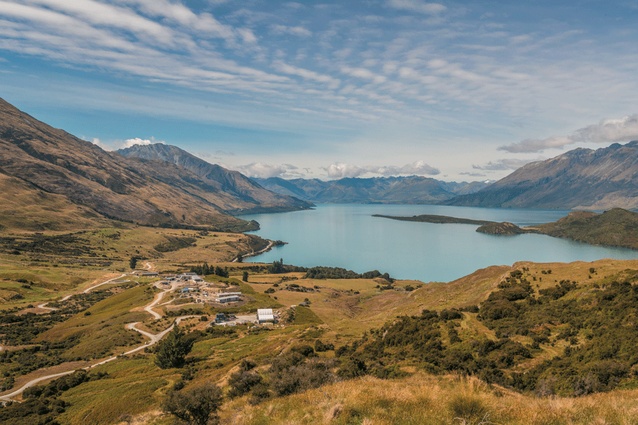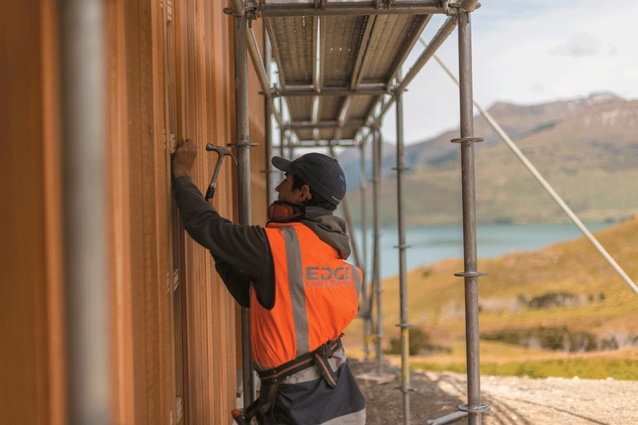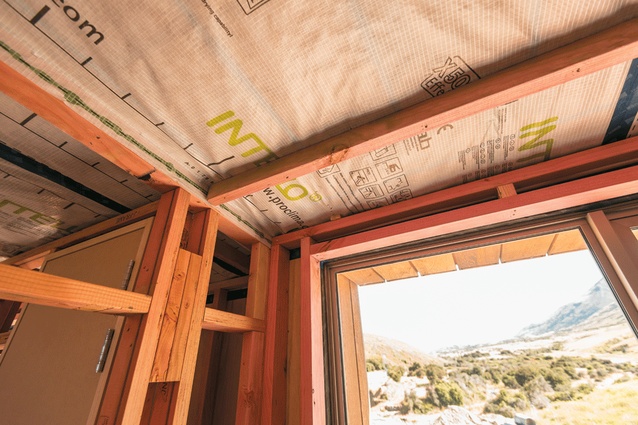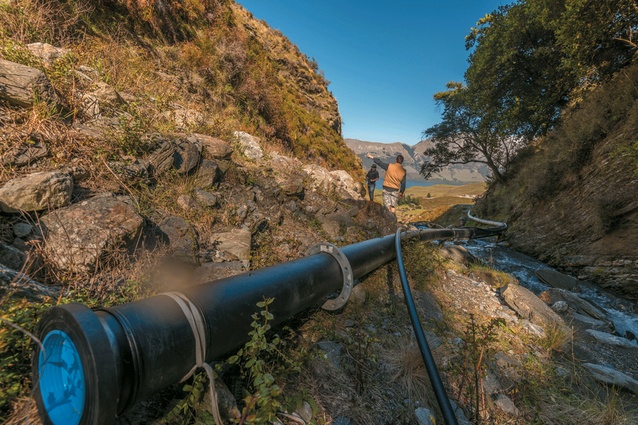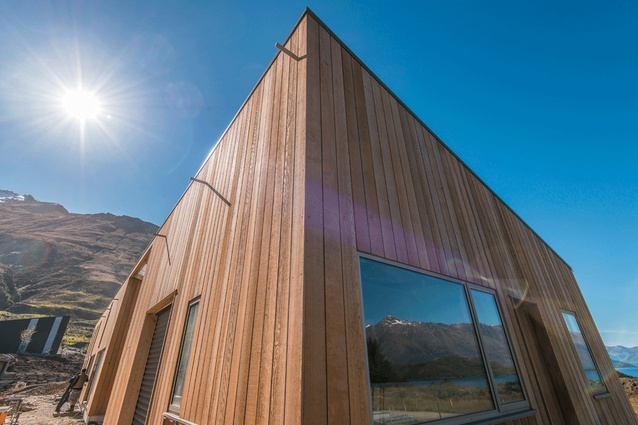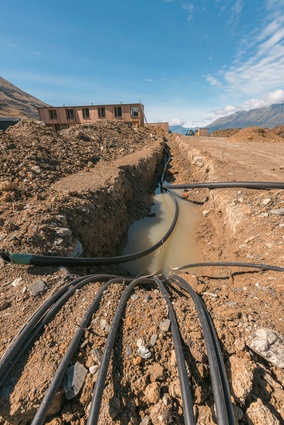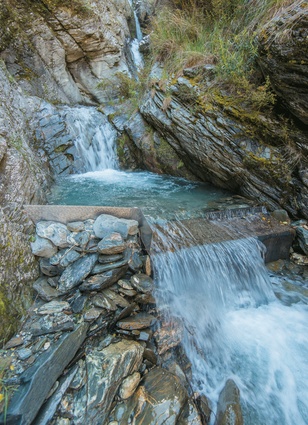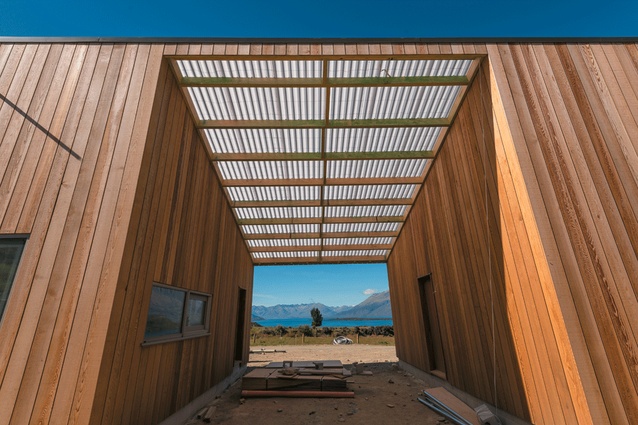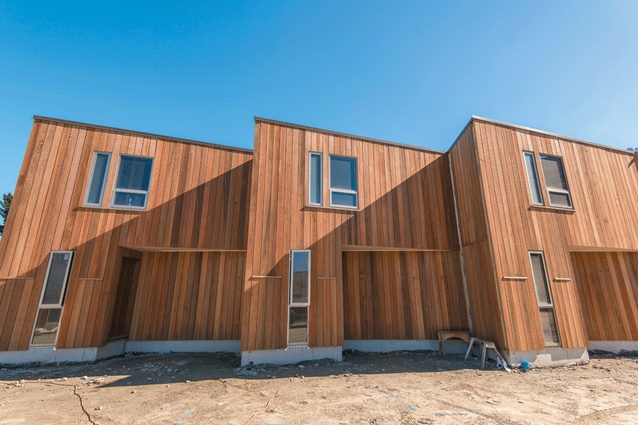Southern retreat
Utilising bespoke building methods, a wellness centre under construction near Queenstown is the first of its kind in New Zealand. It will operate entirely off the grid.
Designed to blend in with their surroundings, the buildings that will make up New Zealand’s first off the grid health retreat sit on remote ridges in the hills near Glenorchy.
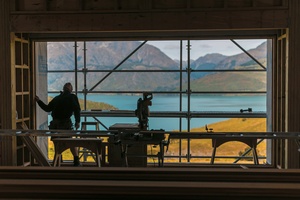
Overlooking the northwestern end of Lake Wakatipu, the buildings are clad in vertical fixed reverse board and batten cedar and local schist, and blend into the local landscape. None of the structures break the skyline or disrupt the spectacular views of the scenic area from the Queenstown-Glenorchy road.
Due for completion at the end of this year, the Aro Ha health and wellness retreat will offer guests an experience recognising the need for a regenerative culture; with the facility itself providing part of the education.
Client Damien Chaparro, who in partnership with Chris Madison developed the concept of Aro Ha, said the idea grew from the desire for a teaching space that fitted with holistic wellbeing.
“I always felt like the missing piece of the puzzle when teaching holistic health was the way in which we lived with structures and the land,” Mr Chaparro said. “We wanted to create with Aro Ha a more complete circle for holistic health – a structure and landscaping that provided a teaching point, and a model for what we would like to see in the future of construction.”
Comprising 10 separate buildings, the centre will incorporate a 55 kW micro hydro scheme, 450 square metres of photovoltaic solar panels and an associated lithium iron battery bank, which in combination will produce the retreat’s electricity.
Evacuated solar tubes will heat the centre’s water, and in-floor radiant heating will be provided via a district-heating scheme utilising a log boiler and large storage vessel. A small forest of quick-growing trees will provide fuel for the log burner, with food produced on site and stored in two in-ground food cellars.
Queenstown-based Triple Star Construction Management managed the design phase, and is now well on the way to completing the construction phase of the $25 million rural retreat as the main contractor.
Project manager Peter Campbell said the job was not without its challenges, and the client brief required the use of bespoke building methods unfamiliar to contractors, in order to meet the requirements.
Due to the site’s remote location, and engineering principles related to the independent generation of electricity, collection of water, and production of food, various issues cropped up from day one on site.
The first hurdle required diversion of the inherent ground water away from the site in order to get sufficient bearings for foundations. Channels were cut to drain the water down the valley at a natural gradient.
The site is also on rock, which means excavation was time consuming and expensive, Mr Campbell said. And earthquake codes in the mountainous region are higher than the requirements in Christchurch.
“Together with project engineers Dunning Thornton Consultants, we devised and employed foundation initiatives to minimise excavation, meet seismic requirements and realise the vision of project architects, Tennent + Brown Architects.
“Because of this we had to use a lot of concrete in the foundations. Part of the brief was to minimise the use of concrete but because of the solid ground, and in order to meet the earthquake codes we had to use it,” he said. “The sheer volume of concrete required meant we had to organize trucks to arrive from Queenstown, Invercargill and Cromwell for single pours.”
Dust was another early challenge in the project, and one that is still being mitigated. “We have got construction roads that are glacial till, which is basically broken down schist that turns into a very fine dust. It just dries up quicker than we can wet it,” Mr Campbell said. “We are investigating environmentally-sensitive polyimer-based products from South Africa at the moment that can be added to water. We didn’t want to go with the normal methods of dust management, which are pouring diesel or petrol on the road; these products are environmentally sensible.”
Sustainability requirements in the brief meant the buildings needed to have hugely increased thermal envelopes to minimise the energy requirements to both heat and cool in the extremes of the central Otago climate. “To ensure the buildings would perform extremely well, we utilised a unique building technique in which each building is essentially built twice, creating a super insulated building envelope,” he said.
Each building is built twice by constructing the main frame and then fully cladding the exterior elevations with plywood sarking and reverse board and batten cedar on a 150mm insulated frame. Highly efficient double glazed timber window and door joinery is utilised. The interior is then insulated with a building wrap called Intello from Pro Clima, which seals the building and allows it to breathe. The accuracy of the seal is then tested using a blower door test, which allows the identification of any areas of weakness in the seal; areas which are repaired before another frame is constructed and a further 100mm layer of insulation is added to all exterior walls, ceilings and floors prior to the final interior linings being completed.
“This hugely reduces energy requirements for both thermal performance by retaining warmth and keeping areas cool. “A lot of these details are not standard, and the sequence of building was unusual which meant contractors had to adapt quickly to the requirements. They enjoyed working with this unique design. “We dealt with the unfamiliarity by ensuring good communication with the structural engineer, and breaking the contractors into teams. Each team has a foreman who reports back to the construction management team. Five teams were put together in total, each working on a different building.”
The large site covers an area of more than 15 hectares of sloping hill country approximately 200 metres above Lake Wakatipu. To allow the retreat to function in an off the grid capacity, nearly one kilometre of trenching was undertaken from an unnamed creek at the foot of the Richardson Range to a building in the farm area of the retreat. Water runs over a metal grate before entering a pipe, 200mm in diameter, that runs down to the buildings 800 metres away over a vertical drop of 120 metres, giving it the speed to run a 50kW hydro turbine.
“The hydro turbine runs all the electrical components of the building for most of the year, such as lighting, washing machine, dryer, pumps and general electrical requirements,” Mr Campbell said. “However, for two or three months of the year the water levels will be too low to generate power. That’s when the photo voltaic solar panels will be used.”
The completed retreat will see 450 square metres of photo voltaic solar panels installed, one of the largest installations in New Zealand. The solar-generated power will be housed in a large bank of lithium iron batteries, which will allow the site to operate at 75 per cent functionality with two days autonomy.
Due to the super insulated thermal envelopes, only minimal heating will be required for the buildings. This will be provided by a district-wide radiant in-floor heating scheme, which utilises a log burner and large hot water storage area. The district scheme requires heavily insulated pipes to move the warm water underground between the separate buildings, where it passes through a manifold to slab pipes. “We investigated numerous possibilities in relation to water at the site,” Mr Campbell said. “Because the brief required a self-sufficient, regenerative environment, there were a number of ways we could achieve that.”
Extensive drilling was undertaken at the site to establish a high-yielding bore. “Water is pumped from the bore and elevated over 100 metres to the upper sites where it is stored in two large ground tanks and then piped to various buildings via gravity.”
Three large dams were constructed to gather ground and roof water, which will be used to irrigate orchards and gardens, and provide a static fire-fighting resource. “And once the water moves through the hydro turbine, we still have that available to use for irrigation,” he said.
The fast track 18-month build is set to be complete in December 2013, with the facility opening in early 2014. The labour required to complete this diverse project on schedule has seen between 60 and 120 staff on site at any one time, a large increase in demand for the Glenorchy area.
While the project is not aiming for any specific green build rating, Mr Campbell said the team was measuring itself against various sustainable building principles with the aim of ensuring the client’s brief of creating a regenerative centre was realised, allowing participants to learn from the facility itself as part of their overall experience at the retreat.

